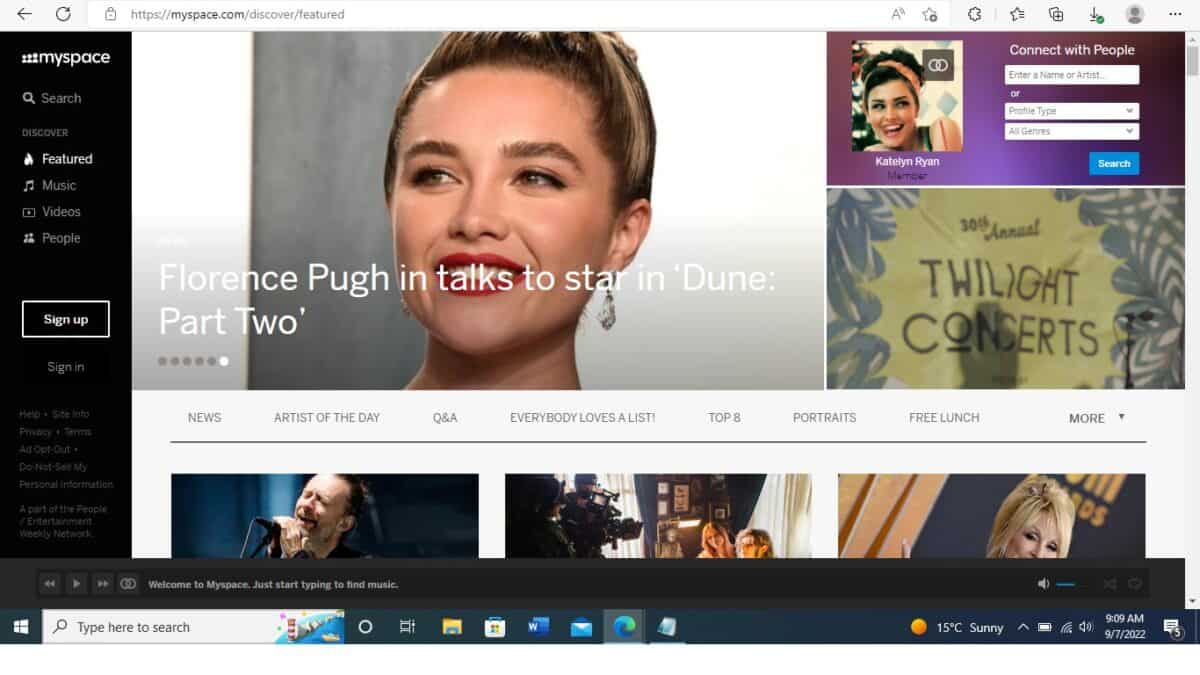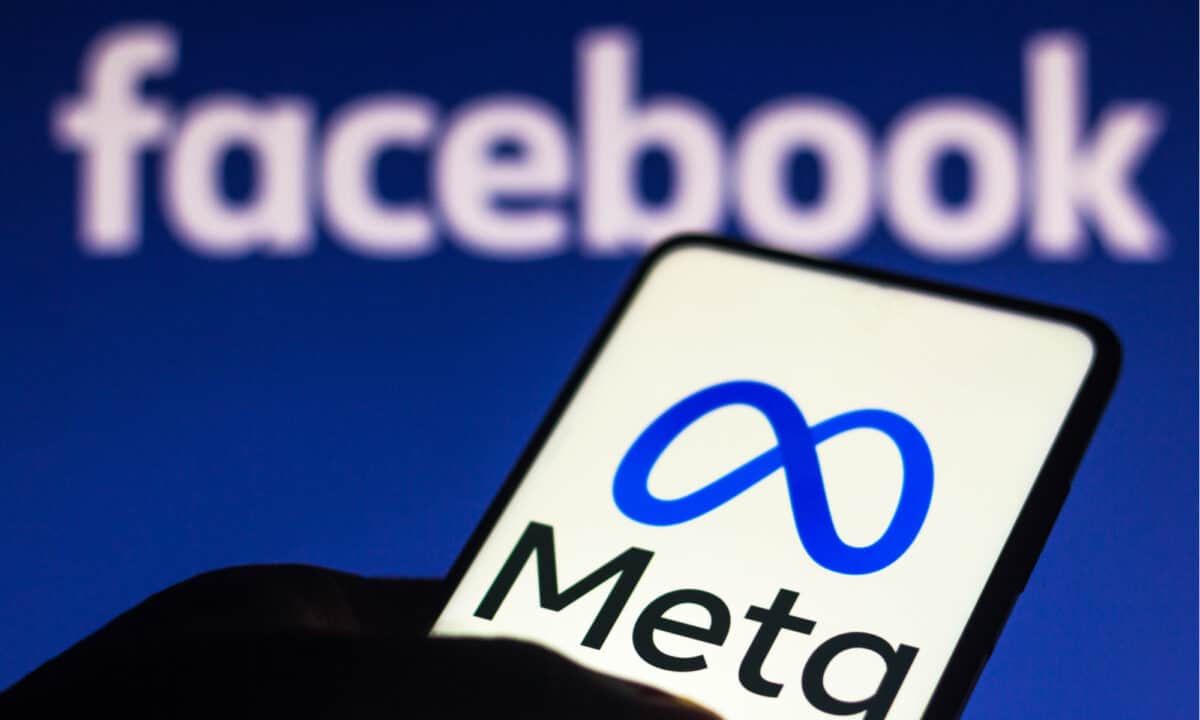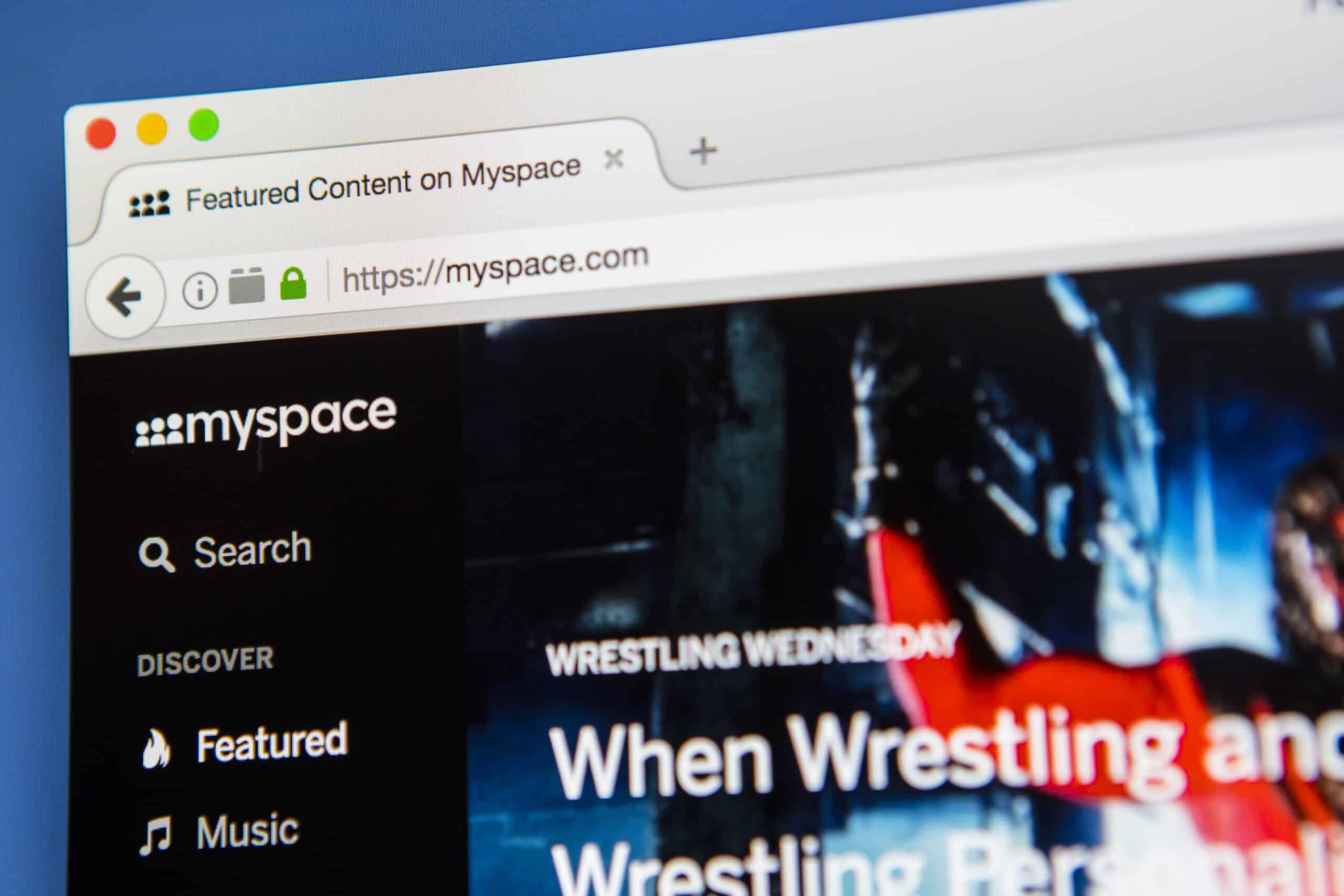While MySpace was the first social media platform to spread globally, its demise was also the largest public fall from grace the internet had seen thus far. The rise, plateauing, and eventual fall of MySpace continue to be studied more than a decade after its eventual sale. But what’s the real truth about why MySpace failed? What made MySpace so successful in the first place? And how did it end up where it ultimately ended up? Let’s look at the real reason MySpace failed so spectacularly.
The Significance of MySpace
Social networking platforms, from online forums to chat rooms to sites like Friendster, were already in existence when MySpace was launched in August 2003. However, no social network site had grown to the size and scale of MySpace.
Quick Facts
- Year Founded
- 2003
- Founders
- Chris DeWolfe, Tom Anderson, Jon Hart
- Industry
- Social media
- Headquarter
- Beverly Hills, California
- Key People
- Tim Vanderhook, Chris Vanderhook, Justin Timberlake
- Notable Products
- MySpace
- Website
- https://www.myspace.com
From technology to music to pop culture, MySpace was truly a global powerhouse for musicians, entertainers, and everyday users alike. Various up-and-comers found serious success from uploading their demos to MySpace: the Arctic Monkeys, Owl City, Calvin Harris, Adele, and the list goes on. It also served as a springboard for other sites like YouTube, Photobucket, and more. Sure, MySpace is a shell of what it once was today, but it was all the rage back in the day.
MySpace’s Reception from Critics
Naturally, even during its heyday, MySpace was never perfect. For all the positive impact MySpace had on the music industry and the future of social media, there were just as many negative aspects of the site. Critics were quick to point these out. For one, from almost the very start, MySpace was subjected to numerous catastrophic data breaches. This issue has plagued social media sites such as Facebook and Twitter.
There was also the issue of cyberbullying on MySpace. Critics were quick to take note of this at the time, but it has yet to be resolved in any sort of meaningful way. This goes hand-in-hand with the issue of child safety. A lot of underage users signed up on the site, resulting in countless accounts managed by minors that used fake information, an action that violated the site’s terms and conditions.
MySpace also drew criticism over issues relating to musicians’ rights. This is another conversation that still happens to this day with sites such as Spotify, Pandora, and the like. Many questions over how much musicians should receive per stream, what kind of royalties musicians are entitled to when publishing music online, and various other pertinent inquiries still remain unanswered.
MySpace Specs
| Launched | August 1st, 2003 |
| Current Owner | Viant Technology LLC |
| Original Founders | Chris DeWolfe, Tom Anderson, Jon Hart |
| Industry | Social media |
| Peak Valuation | $12 billion (2007) |
| Date Sold | June 29th, 2011 |
| URL | myspace.com |
MySpace: The Complete History

Before MySpace grew into a global sensation, it was just an idea in the minds of Internet marketers at a company called eUniverse. Caught up in the sensation of Friendster, Brad Greenspan, Chris DeWolfe, Josh Berman, Tom Anderson, and other programmers started developing their social networking site in the summer of 2003. Using their resources and technology, the group had a prototype of sorts in under two weeks. They called it MySpace.
Tens of millions subscribed to eUniverse’s e-newsletter. As a result, Greenspan, DeWolfe, German, Anderson, and others on MySpace were able to recruit boatloads of people for the new social media site. By 2005, MySpace had become the largest social network on the planet. Likewise, it was the first social networking site to attain a global audience.
News Corporation bought MySpace for more than half a billion dollars in July 2005. At the time, the site was enjoying close to 20 million monthly active users. Six months later, MySpace was adding 200,000 new users a day. By January of 2007, that number had risen to nearly 350,000 a day. MySpace was now the most popular social media site worldwide. Bringing in around a million dollars in revenue daily, MySpace also reached its peak valuation of $12 billion in 2007. They were unstoppable until they weren’t.
Early Signs of Imminent Failure
Concurrent with MySpace’s rise to worldwide popularity was the development and growth of Facebook. While originally only targeting college students, Facebook wasn’t much of a threat to MySpace in those early years. They emerged in 2004 and slowly spread to colleges and universities throughout the U.S. for the remainder of the year. By 2005, high schoolers and employees of several burgeoning tech brands like Apple and Microsoft joined the bandwagon.
That same year, DeWolfe and Zuckerberg attempted to negotiate a deal for the sale of Facebook. The $75 million offer was rejected, and talks ceased. While no one could have guessed it at the time, this was the earliest sign of MySpace’s eventual demise. Such a suggestion would have been laughed off in 2005 — after all, $75 million was less than three months of revenue for MySpace at its peak — but it’s nevertheless the truth.
MySpace and Facebook continued their respective growth, with MySpace going on to its acquisition by News Corporation and Facebook slowly expanding beyond its initial audience. For a few years, it simply didn’t matter that Facebook and MySpace failed to agree. In global markets, MySpace was leading Facebook two to one. Then 2008 rolled around. That’s when everything changed.
The Eventual Demise of MySpace
In early 2008, Facebook surpassed MySpace in terms of search traffic. The search traffic translated to something even more detrimental: total unique visitors. Facebook pulled more US visitors and eventually overtook MySpace in numbers. MySpace tried changing the site’s look and feel by implementing a total design rehaul. This was a bad idea, as anyone who knows anything about social media sites know users hate redesigns. The site was hemorrhaging users, losing them like an avalanche. The downward momentum was just too strong to reverse course.
MySpace lost an estimated 10 million users between January and February of 2011. Additionally, unique monthly users fell from 100 million to 60 million a year. February 2011 was even more devastating than January, with users dropping to less than 38 million. Advertisers started giving the site a wide berth. No potential buyers were interested in submitting a bid.
At the last minute, Specific Media Group and Justin Timberlake (of all people) purchased the site for $35 million. It shifted focus from social networking to music promotion, effectively ending its role as a social media site.
Why MySpace Failed
There are several plausible reasons why MySpace failed. Unlike Facebook and other social media sites, MySpace attempted to target a niche audience of music and entertainment lovers. Focusing on a particular group would eventually limit users.
A lot of MySpace users who signed up initially just so happened to reach college age at the exact moment Facebook had begun to grow. Together with millions of others, these users switched from the older site to the newer site en masse. Partial blame also goes to MySpace and Google’s $900 million ad deal.
Signed in 2006, MySpace and Google agreed to a three-year, nearly billion-dollar deal that would give the search engine exclusive rights to MySpace search results and sponsored links. While this put close to a billion dollars in MySpace’s cash pool, it was eventually viewed as a mistake for the sheer number of ads on social media. MySpace was a complete toast for all these reasons and countless other micro-failures.
Why Did Facebook Succeed?

Many consider Facebook the superior version of MySpace, and for a good reason. Facebook managed to succeed in many of the areas where MySpace fell short. The company’s success can be pinned to its willingness to grow and reshape with its audience. While initially targeting only college students, Facebook was more than willing to onboard other users.
Welcoming high schoolers and those working for notable tech companies, Facebook eventually opened the floodgates and allowed anyone to join. On the other hand, MySpace focused so much on music and entertainment. While the internet initially thrived on finding a niche and focusing on it, this eventually changed. Facebook knew this, while MySpace chose to ignore it. This was a major part of the former’s success story and the latter’s downfall.
There are many other minuscule reasons why Facebook succeeded, whereas MySpace failed. Facebook introduced a constant stream of new features that took the site beyond MySpace’s basic offerings. The social media site was easy to navigate and use. Not to mention, Facebook benefitted from embracing mobile far more enthusiastically than MySpace.
Up Next:
- The Real Reason Zune Failed Spectacularly
- The 5 Real Reasons Netscape Failed
- The 5 Real Reasons Polaroid Failed
- The Real Reason Atari Failed Spectacularly
- The Real Reason Fire Phone Failed Spectacularly
The image featured at the top of this post is ©chrisdorney/Shutterstock.com.








